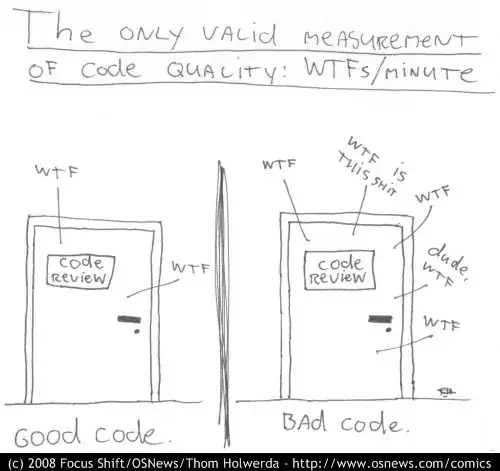I'm dealing, again, with a messy C++ application, tons of classes with confusing names, objects have pointers into each other and all over, longwinded Boost and STL data types, etc. (Pause and consider your favorite terror of messy legacy code. We probably have it.) The phrase "code rot" oft comes to mind when I work on this project.
Is there a quantitative way to measure code rot? I wouldn't expect anything highly meaningful or scientific, since no other measure of code productivity or quality is so fine. I'm not looking for a mere opposite of measures of code quality, but specifically a measure of how many bad things happened after a series of maintenance software "engineers" have had turns hacking at the code.
A general measure applying to any language, or many languages, would be great. If there's no such thing, at least for C++, which is a better than average language for creating messes.
Maybe something involving a measure of topology of how objects connect during runtime, a count of chunks of commented out code, how mane files a typical variable's usage is scattered over, I don't know... but surely now, a decade into the 21st Century, someone has attempted to define some sort of rot measure.
It would be especially interesting to automate a series of svn checkouts, measure the "rottenosity" of each, and plot the decay over time.
